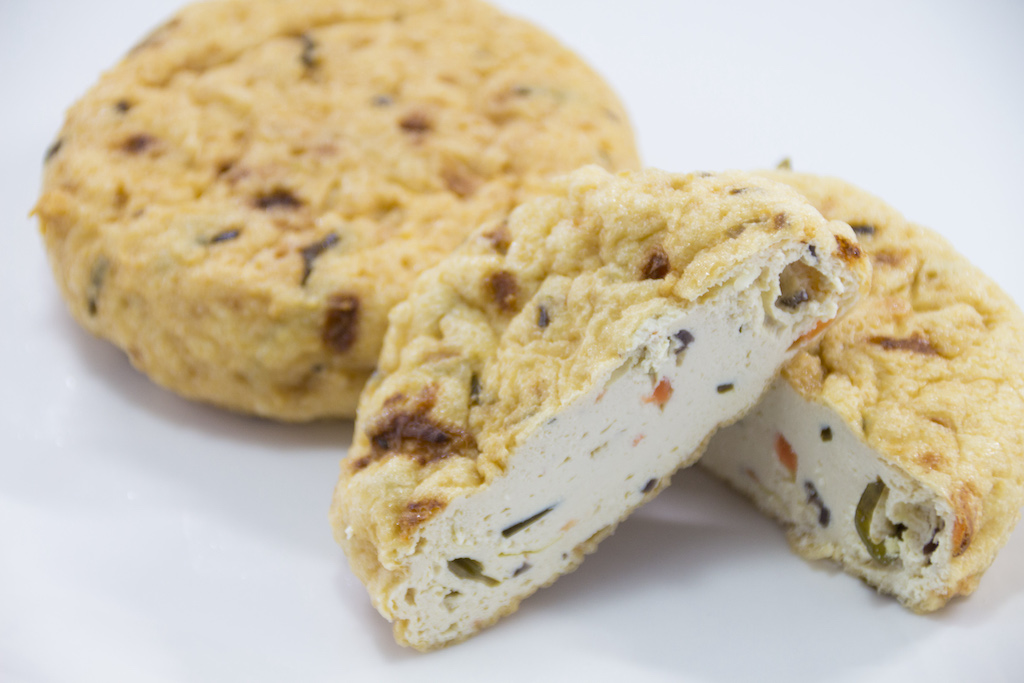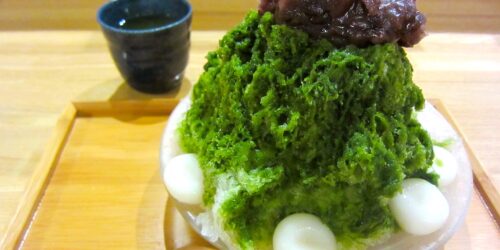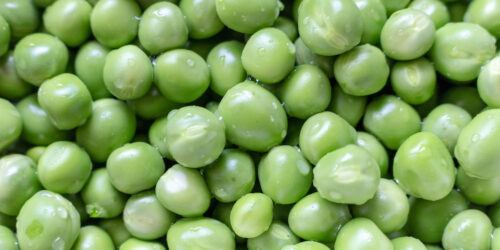45 Foods That Start with か (ka) – Learn Hiragana Characters
Let’s check the list of foods that start with “か” for here.
がーりっく (ガーリック) / GA-RIKKU
It’s Japanese term for “garlic”.
Garlic is called usually “ninniku” in Japanese, but sometimes the term ガーリック (GA-RIKKU) is used for some foods such as garlic rice: ガーリックライス (GA-RIKKU RAISU).

かい (貝) / KAI
It’s Japanese term for “shellfish”.
It’s generic term for mollusks, and it categorically includes squid and octopus.
When it comes to shellfish as Japanese foods, clams, oyster, and scallop are especially popular.
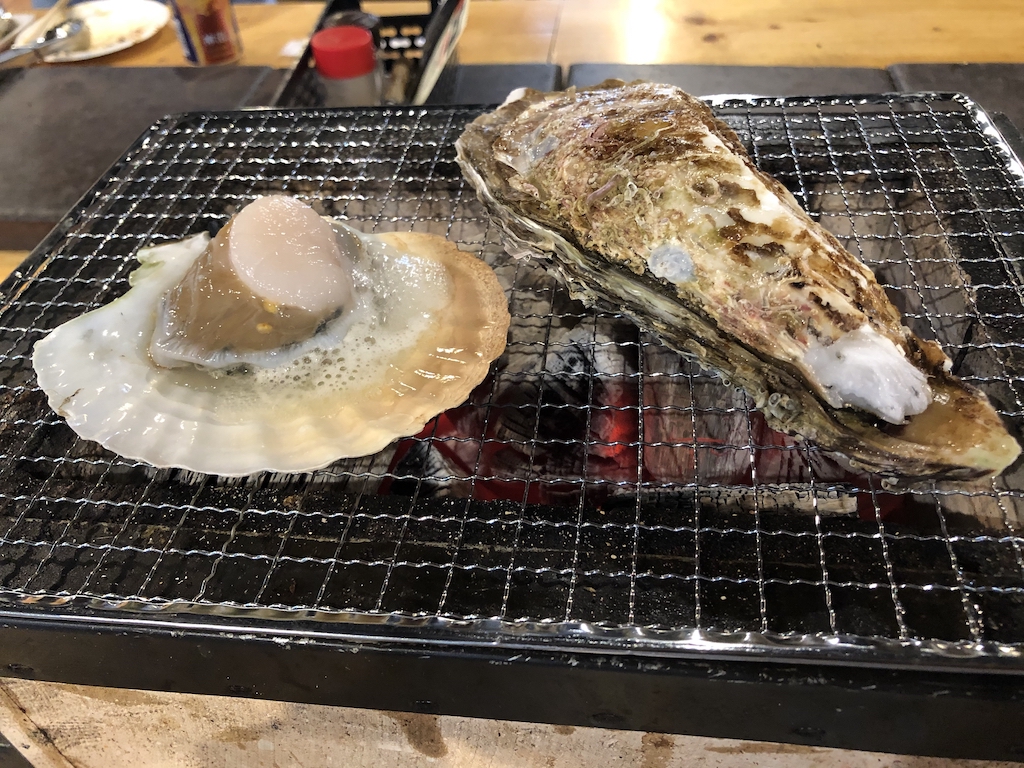
かいせんどん (海鮮丼) / KAISENDON
It’s a bowl of rice topped with sashimi (assorted seafood rice bowl).
It’s not the food served at sushi restaurants but seafood restaurants. The materials for the bowl are, for example, tuna, scallop, salmon, shrimp, squid, crab, salmon roe, sea urchin, etc.
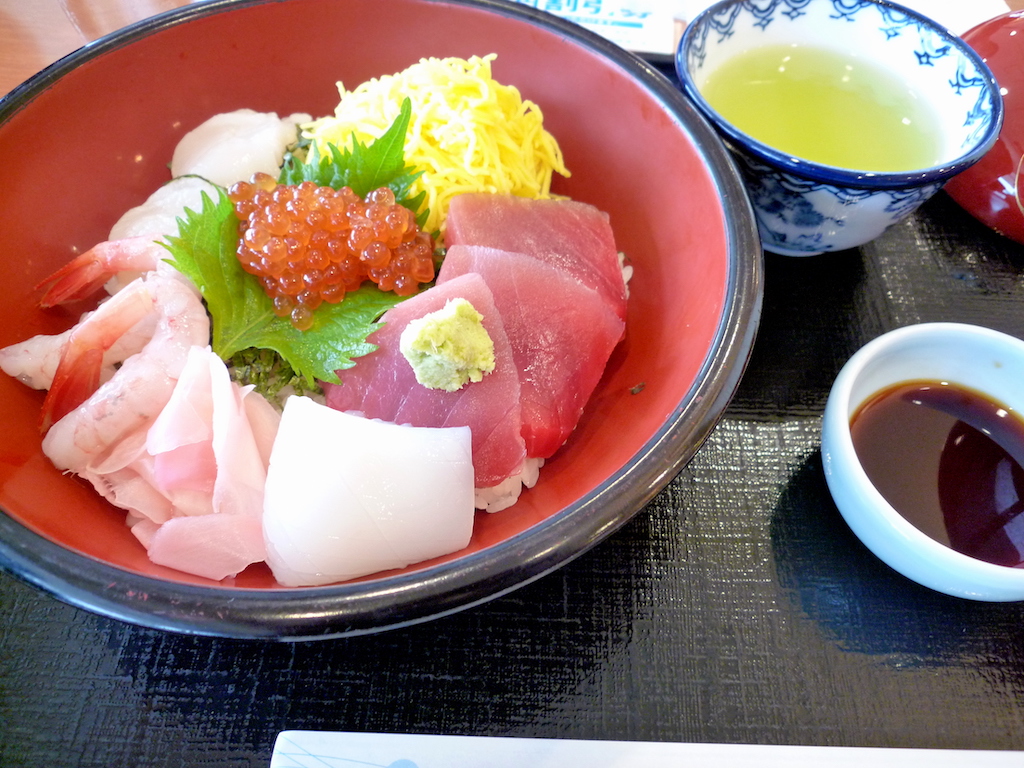
かいそう (海藻) / KAISO
It’s Japanese term for “seaweed”.
There are so many types of seaweed in Japan, for example, kombu (kelp), wakame, nori (laver), etc. 海藻 (KAISO) is a superordinate concept that can cover every types of seaweed.
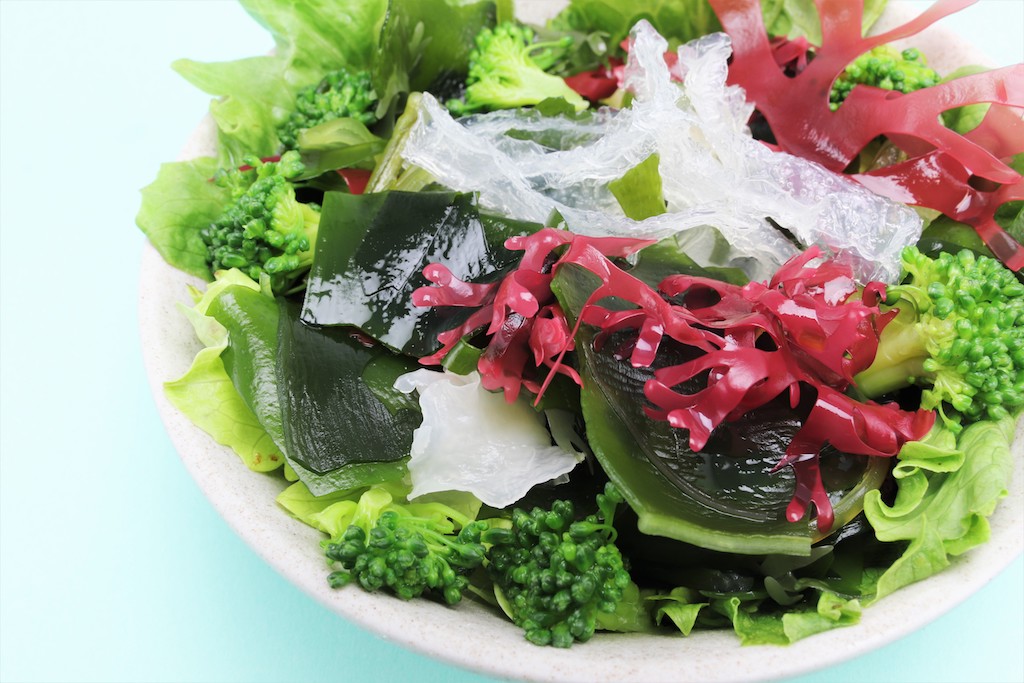
かいばしら (貝柱) / KAIBASHIRA
It’s Japanese term for “adductor muscles of shellfish”.
It sometimes refers to the adductor muscles of scallop. The adductor muscles of scallop is often used for sushi material, sashimi, and sauteed dishes.
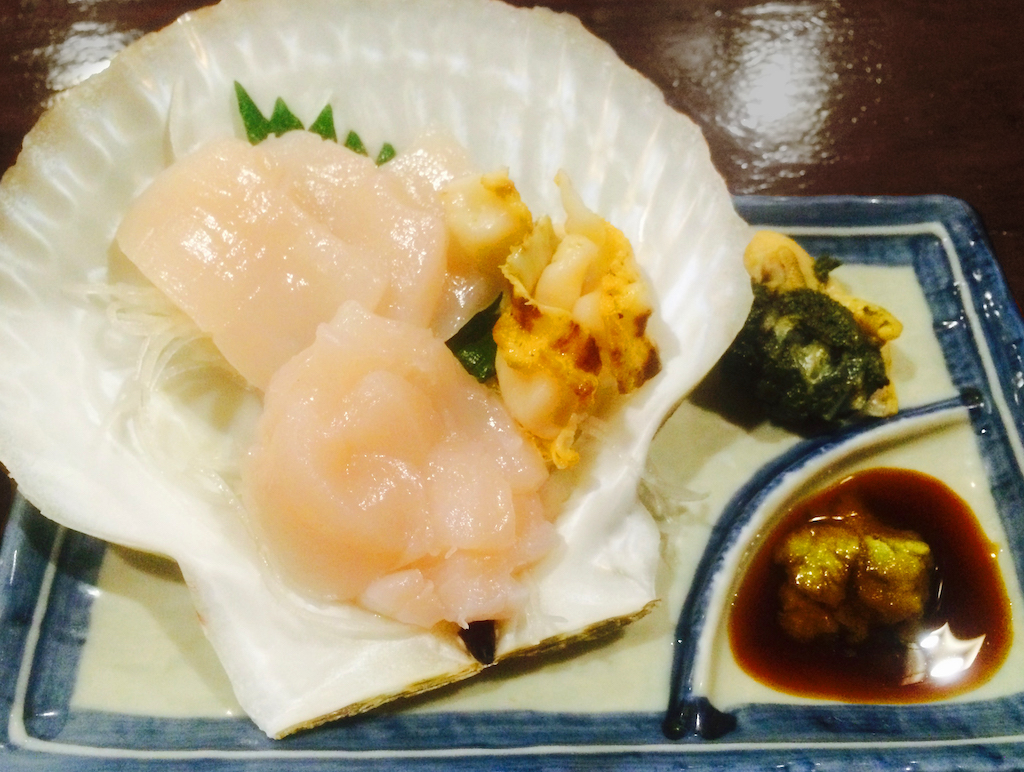
かいわれだいこん (カイワレ大根) / KAIWAREDAIKON
It’s Japanese term for “white radish sprouts”.
It’s edible hypocotyls and cotyledons immediately after germination of radish. People usually eat it raw putting on salad or decorating the dish.
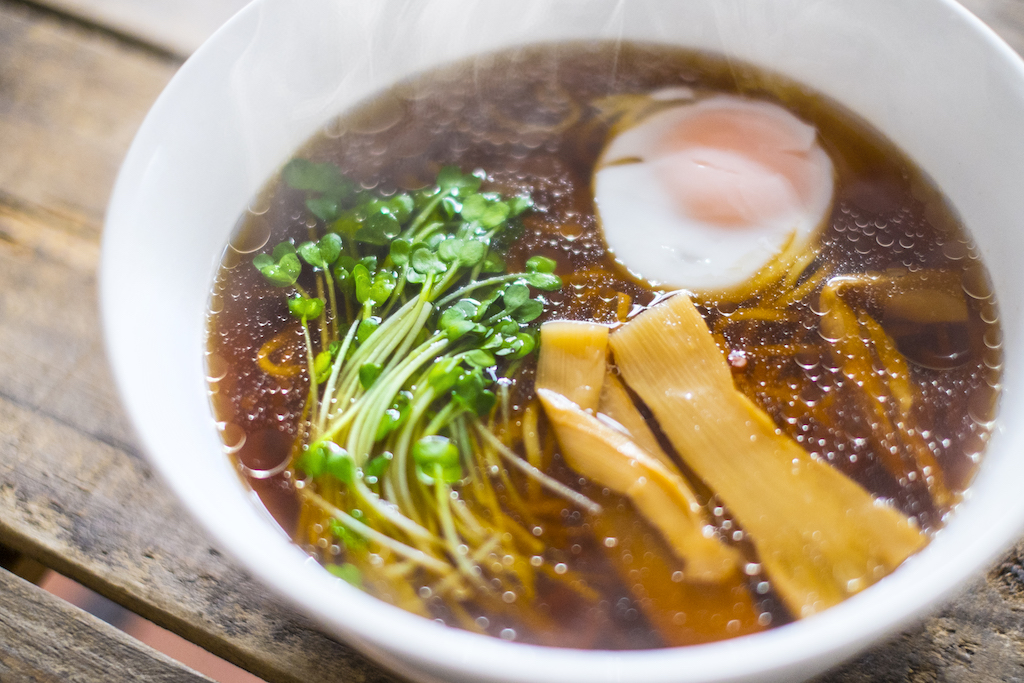
かき (牡蠣) / KAKI
It’s Japanese term for “oyster”.
Oyster is very popular seafood in Japan. The fresh one can be eaten raw. Baked Japanese oyster is extremely delicious, and deep-fried oyster with crispy batter is also great.

かき (柿) / KAKI
It’s Japanese term for “persimmon”.
It’s seasonal fruits, and usually harvested in fall. There are also dried persimmon called “hoshigaki”. It’s much sweeter than the ordinary persimmon.
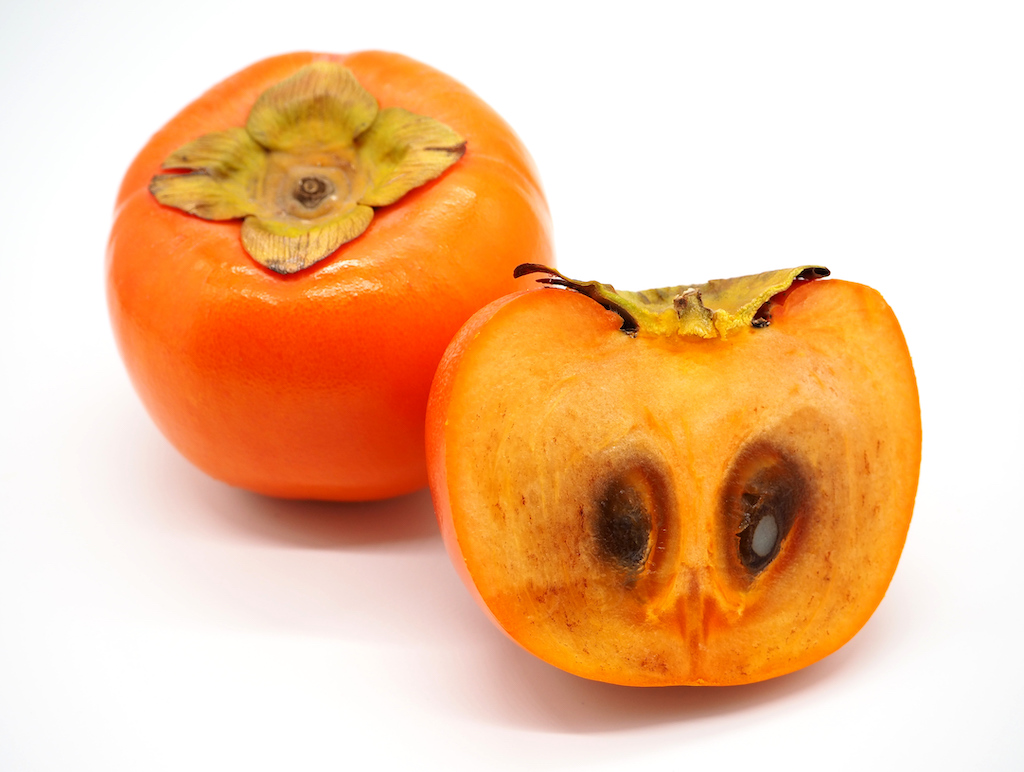
かきあげ (かき揚げ) / KAKIAGE
It’s a type of tempura, and made from several kinds of vegetables and seafood. The basic かき揚げ (KAKIAGE) materials are onion, carrot, and shrimp. Those material should be shredded, and mixed with batter. You can actually put any ingredients you like.
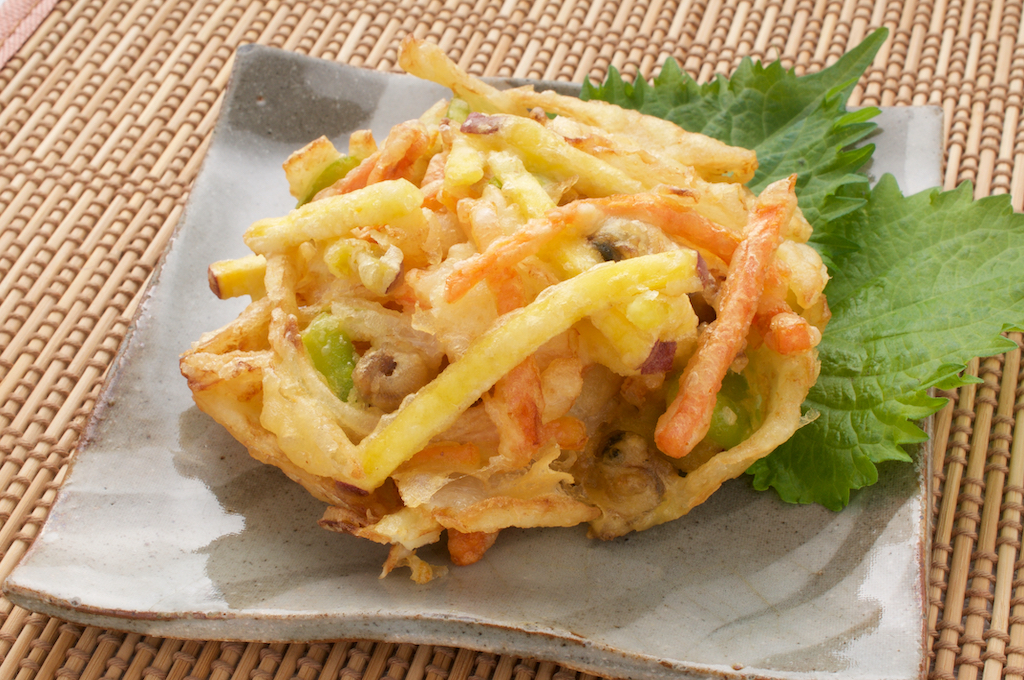
かきごおり (かき氷) / KAKIGORI
It’s Japanese term for “shaved ice”.
It’s very popular snack selling at summer festivals. Shaved ice specialty store recently becoming popular having shaved ice with various gorgeous toppings.
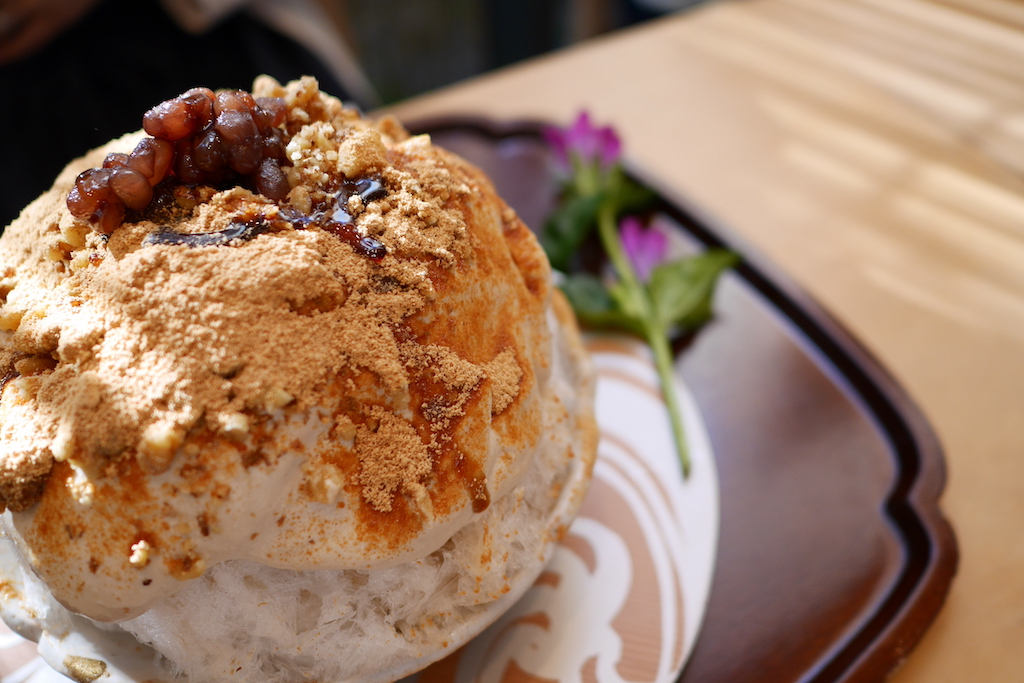
かくざとう (角砂糖) / KAKUZATO
It’s Japanese term for “sugar cube”.
It’s a type of sugar product that is hardened into a cube. You may add it in coffee or tea.
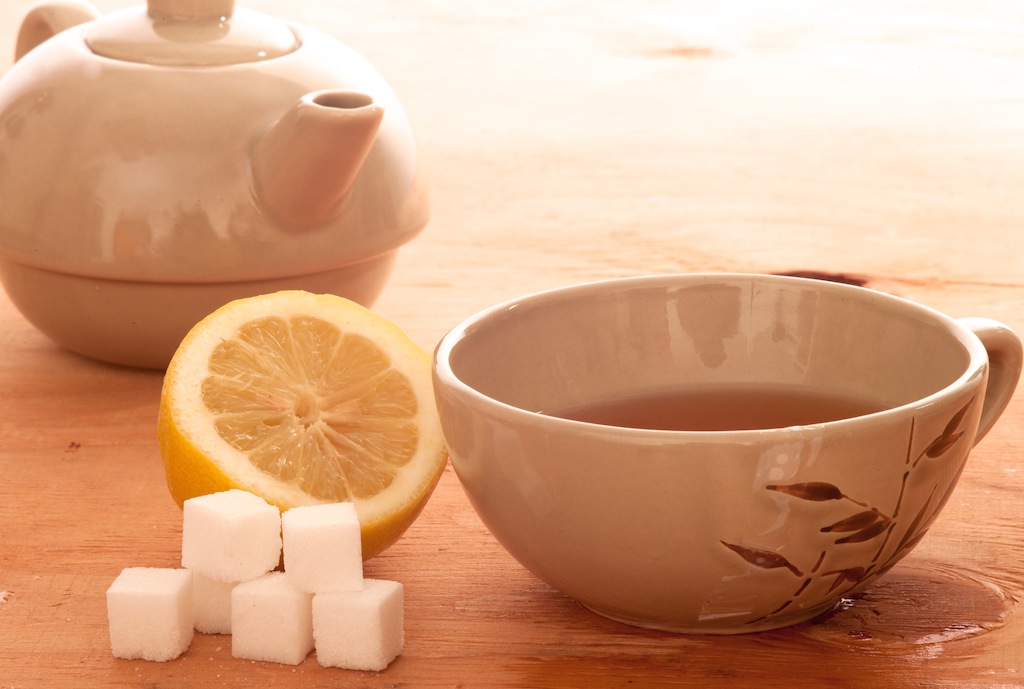
かくに (角煮) / KAKUNI
It’s Japanese term for “stew of cubed meat or fish (especially pork belly)”.
The seasoning for this stew is usually soy sauce based sweet-salty sauce. The meat gets really soft and delicious by simmering for a long time.
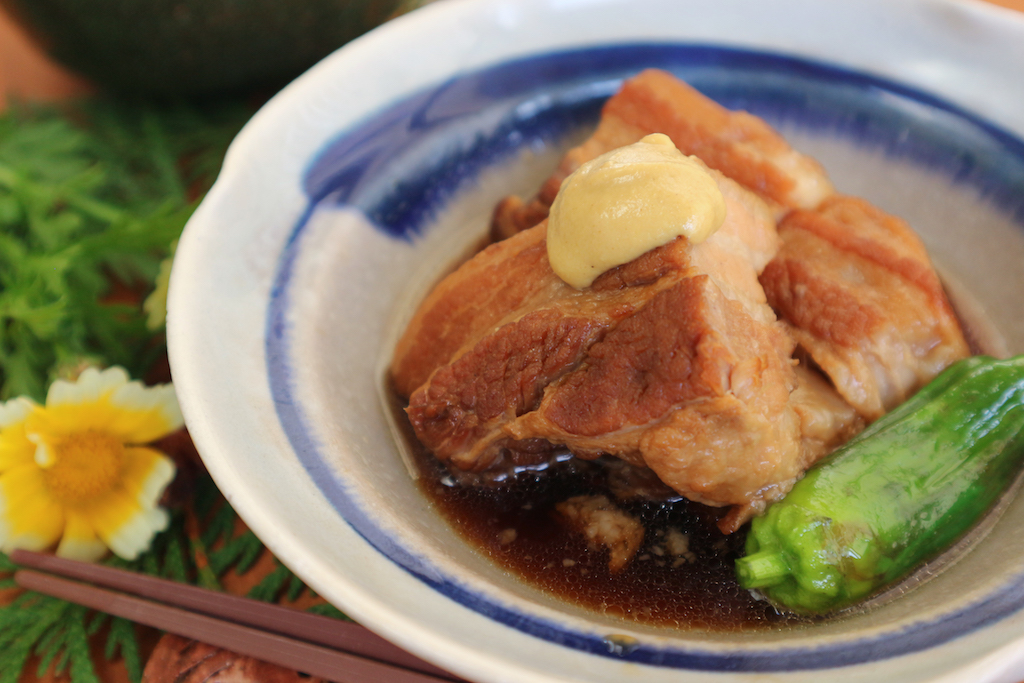
かしゅーなっつ (カシューナッツ) / KASHU-NATTSU
It’s Japanese term for “cashew nuts”.
You may see stir-fried dishes with cashew nuts at some Chinese restaurants. But, it’s often eaten as just snack in Japan, and some of them are lightly salted.
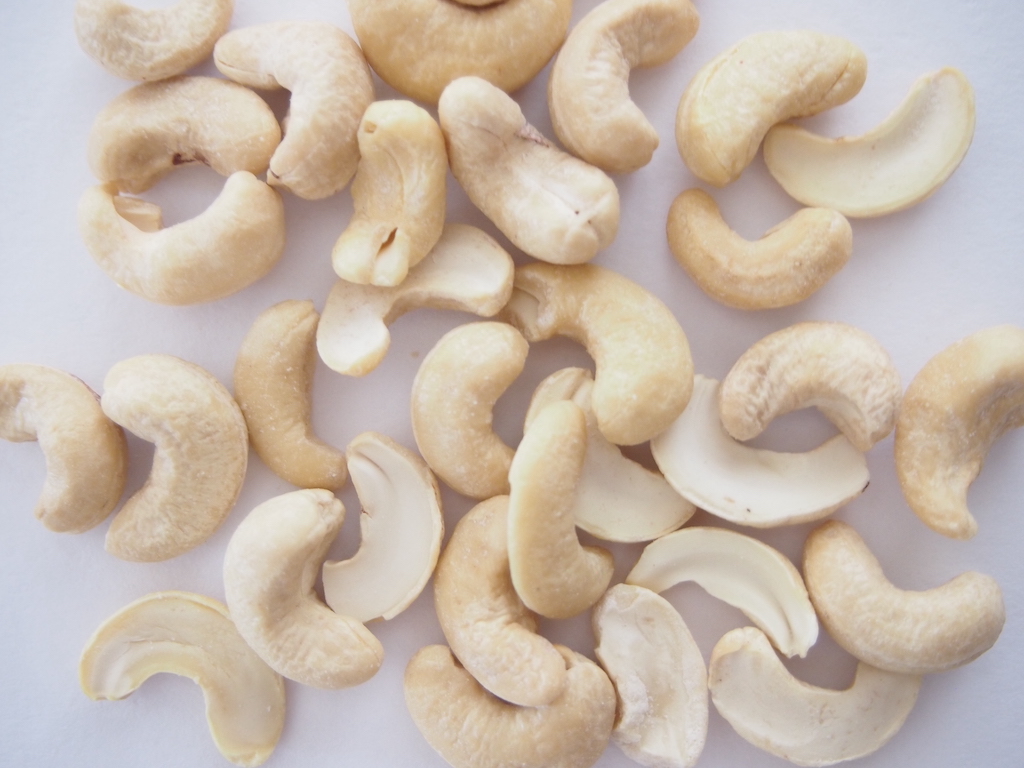
かしわもち (柏餅) / KASHIWAMOCHI
It’s a type of Japanese sweets: rice cake wrapped in oak leaf. The rice cake is usually stuffed with sweet bean paste. It’s supposed to be made for an offering on boys festival day (tango no sekku) in May.
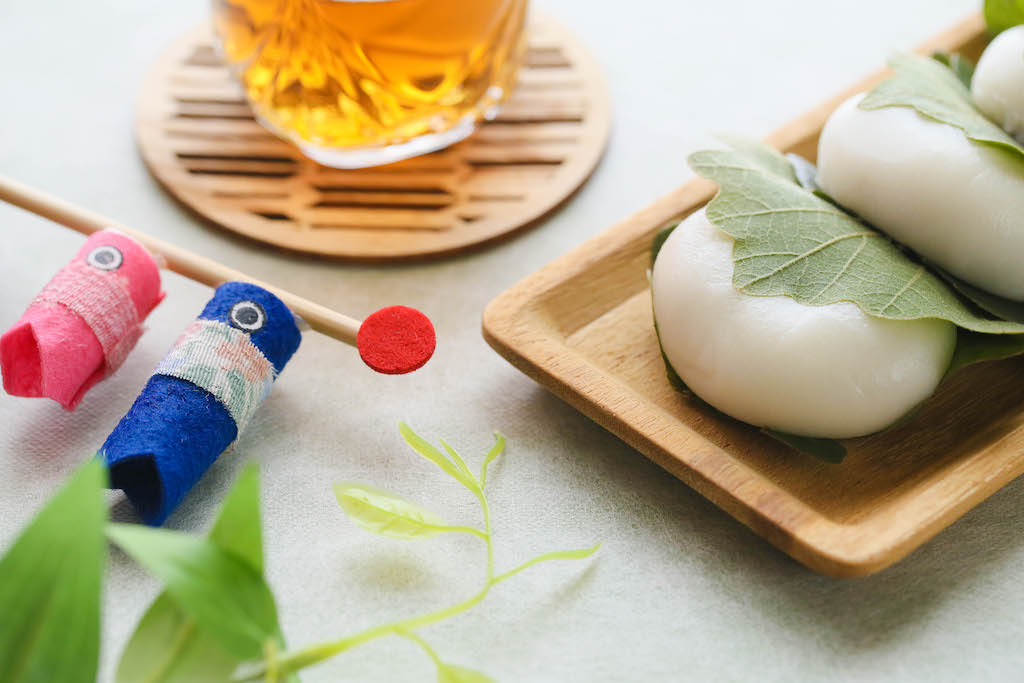
かすたーどくりーむ (カスタードクリーム) / KASUTA-DOKURI-MU
It’s Japanese term for “custard cream” or “pastry cream”.
It’s yellowish sweet sticky cream made from egg yolk, sugar, flour, and milk. Custard cream is also popular as well as whipped cream when making sweets.
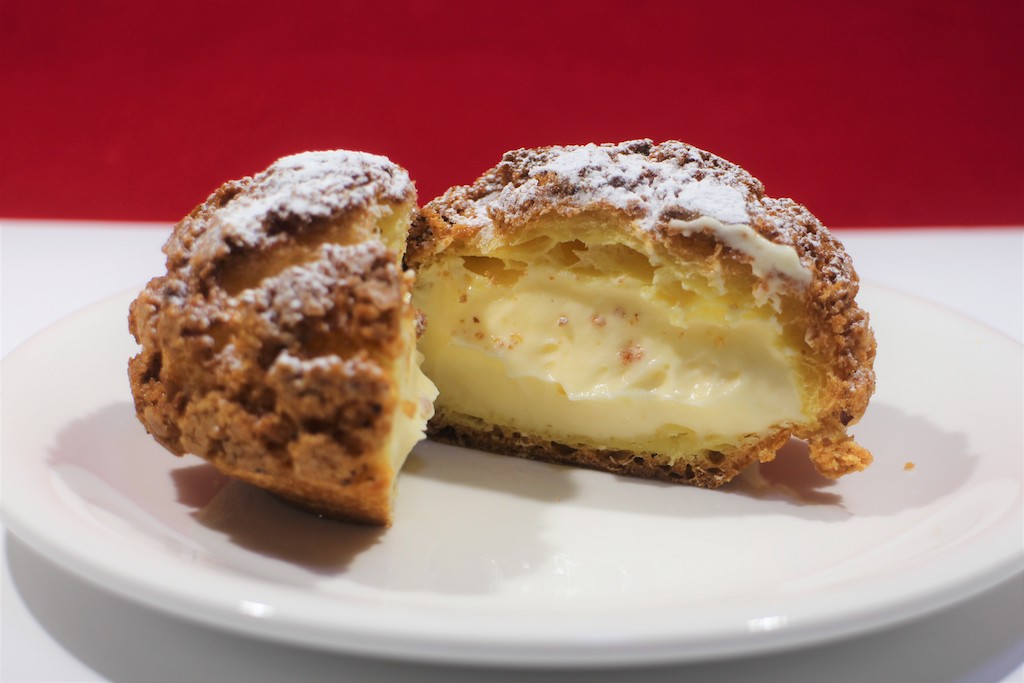
かすてら (カステラ) / KASUTERA
It’s a type of Japanese sweets, sponge cake. You need to whisk the egg, add flour and sugar, and bake fluffy.
It’s simple just sponge cake, but has indescribable gentle sweetness, and the fluffy texture is amazing.
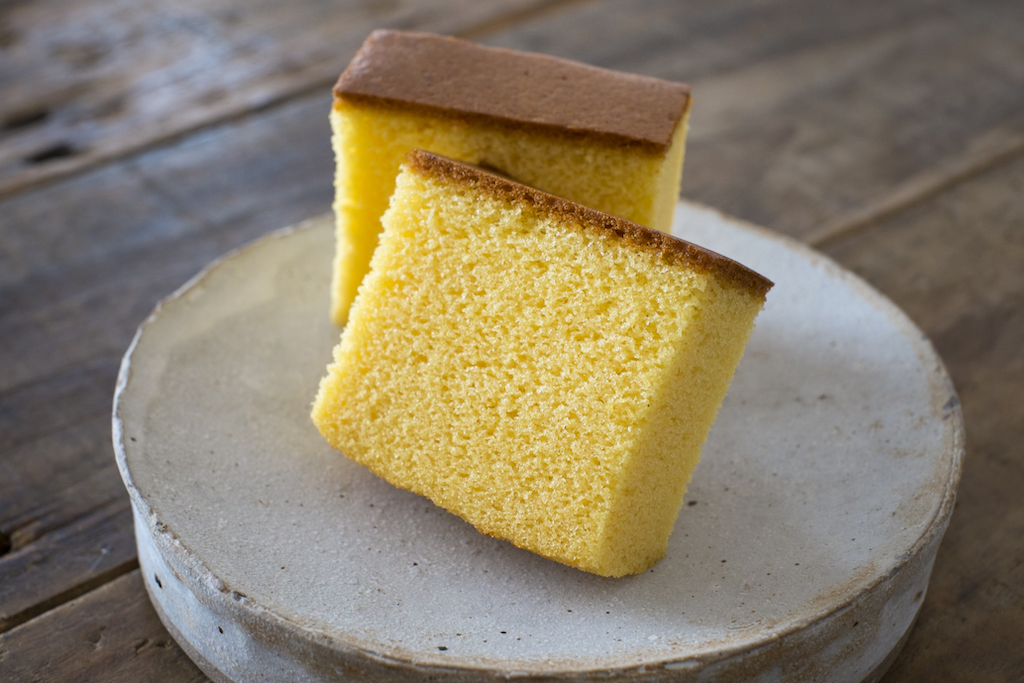
かずのこ (数の子) / KAZUNOKO
It’s Japanese term for “herring roe”.
Generally, people eat the sun-dried or salted herring roe. The large number of grains of herring roe is reminiscent of prosperity of descendants, so it’s often eaten as a lucky charm in New Year, as an ingredient in osechi box.
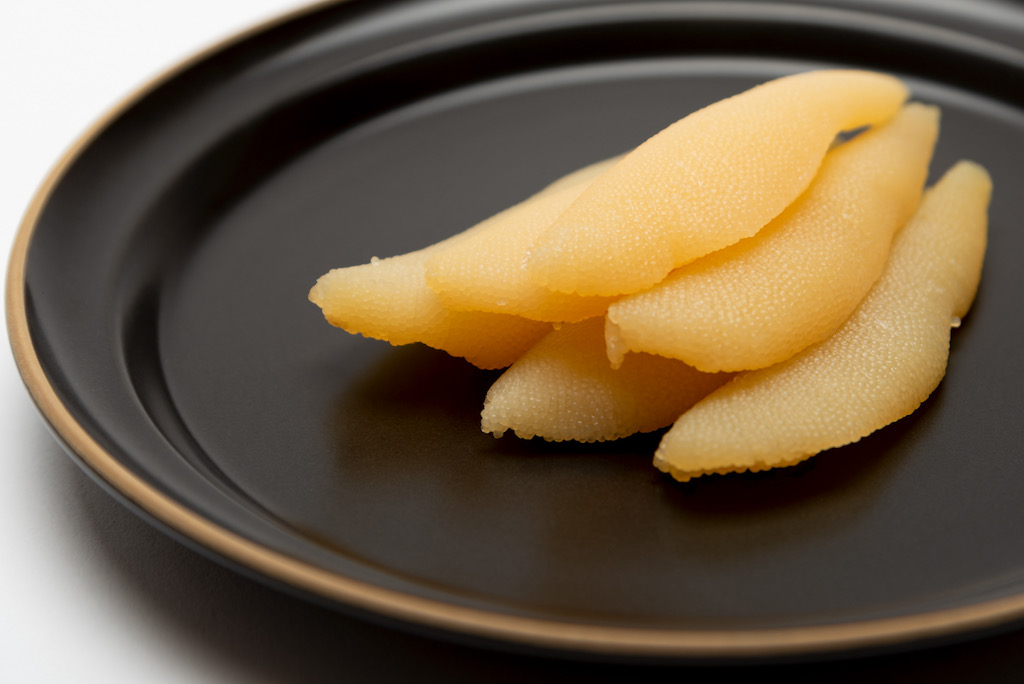
かたやきそば (かた焼きそば) / KATAYAKISOBA
It’s a type of Japanese noodle dish, deep-fried crunchy noodle with starchy sauce.
The sauce is made of various type of vegetables, meat, and seafood. The crunchy texture of the noodles matches so well with thick sauce with plenty of ingredients.
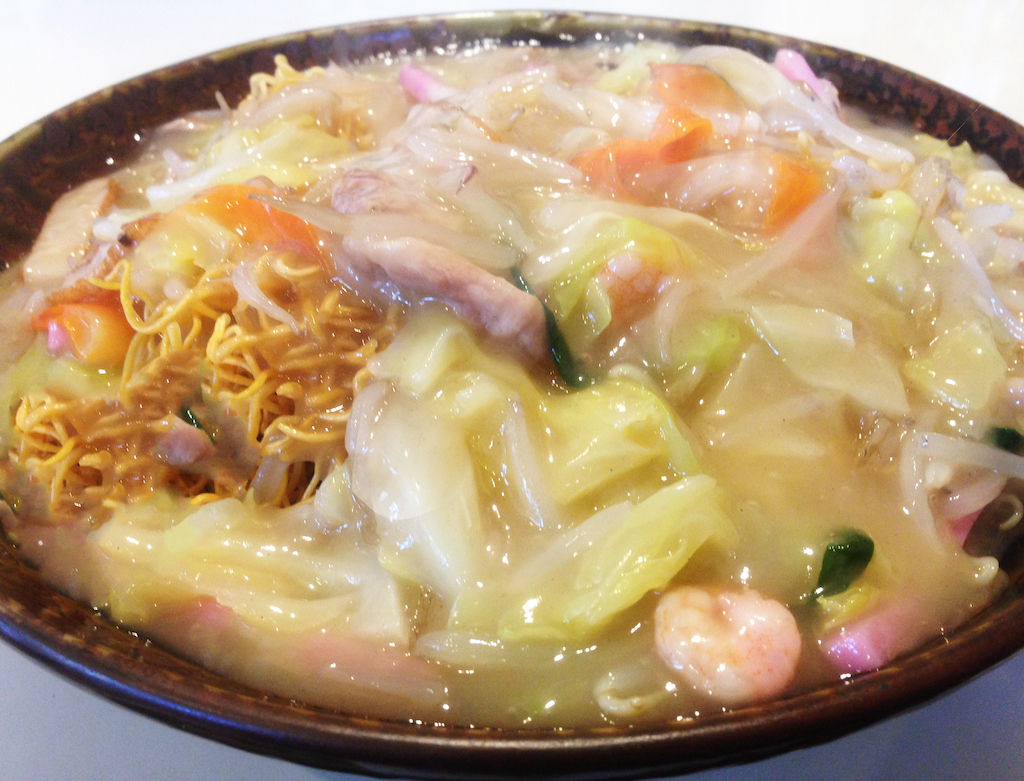
かつどん (カツ丼) / KATSUDON
It’s pork cutlet on rice. Japanese thick pork cutlet is called “tonkatsu” in Japanese, and it’s abbreviated to かつ (katsu). The tonkatsu bowl is usually topped with egg.
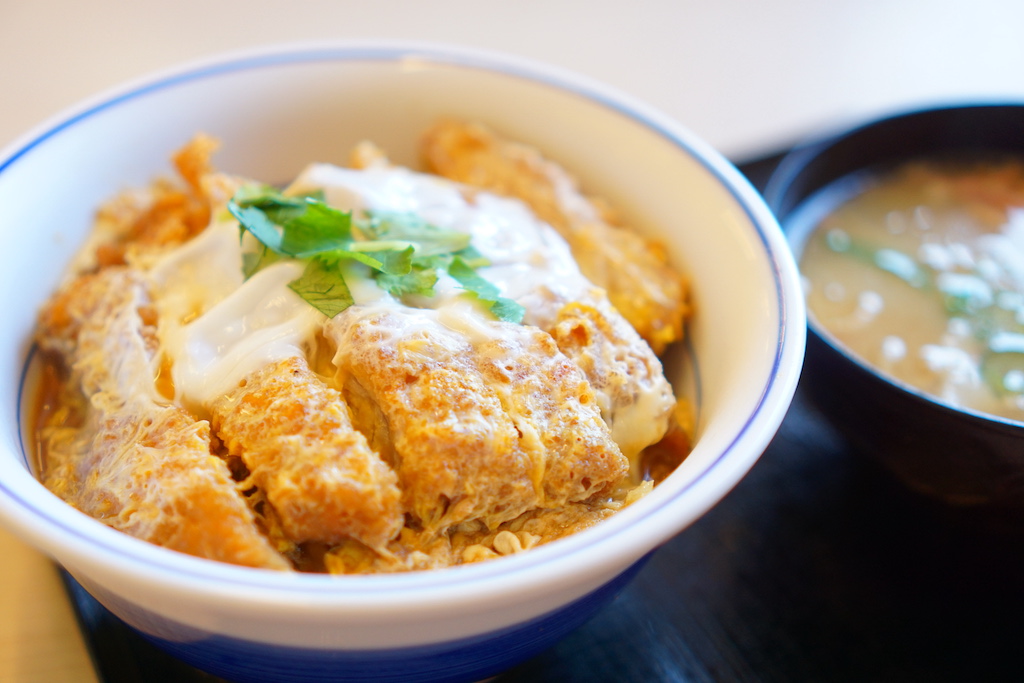
かつお (鰹) / KATSUO
It’s Japanese term for “bonito”.
The representative bonito dish in Japan is sashimi. Unlike the regular sashimi, the skin of bonito is often seared in advance. The dish is called “katsuo no tataki”.
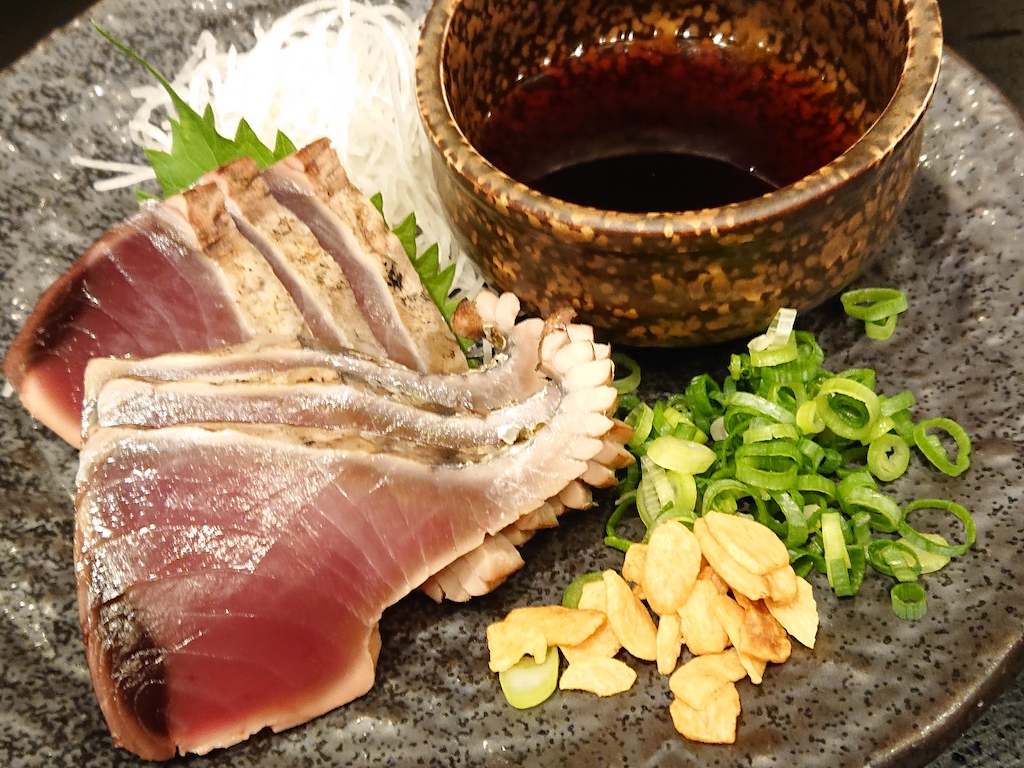
かっぱまき (かっぱ巻き) / KAPPAMAKI
It’s a type of sushi, cucumber sushi roll.
Usually made by rolling sushi rice and cucumber with nori laver. Sometimes shiso leaves, sesame, and miso are added when rolling.
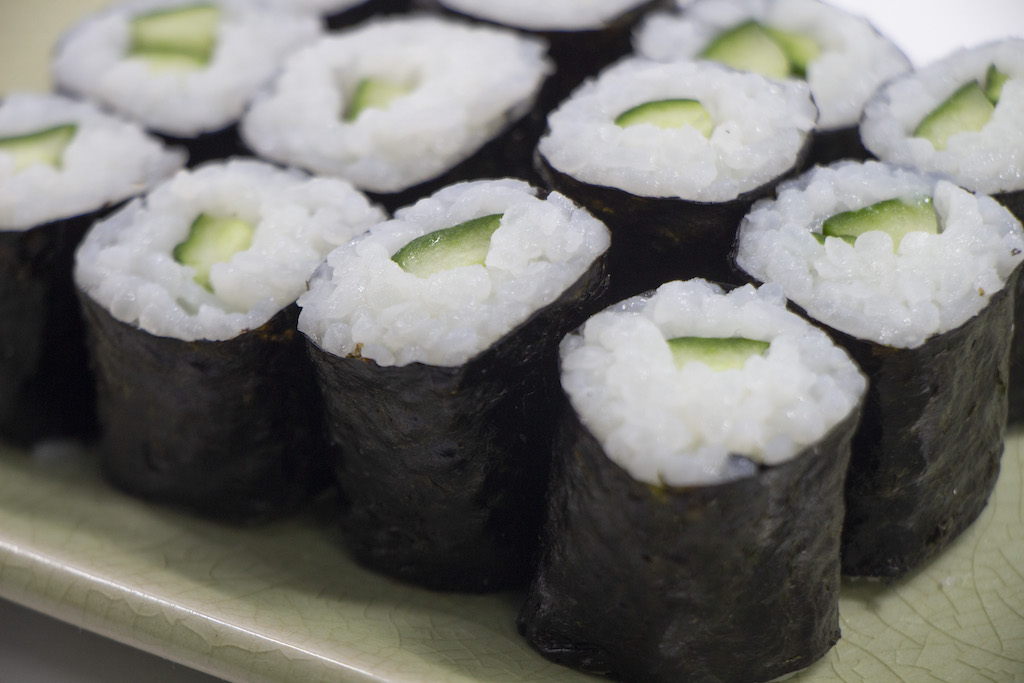
かっぷけーき (カップケーキ) / KAPPUKE-KI
It’s Japanese term for “cupcake”.
Cupcakes are not as popular in Japan as in America. But there are some of them. Sometimes it’s confused with muffins in Japan. I would say Japanese often eat muffins, but don’t really have much habit of doing icing on cakes or something like that.

かっぷらーめん (カップラーメン) / KAPPURA-MEN
It’s Japanese term for “cup noodles”.
In Japan, it’s distinguished clearly from instant noodles. Noodles in a cup that you can eat immediately after pour hot water are called カップ麺 (KAPPU-MEN), while noodles in a plastic package that you need to cook with a pan are called インスタント麺 (INSUTANT-MEN).
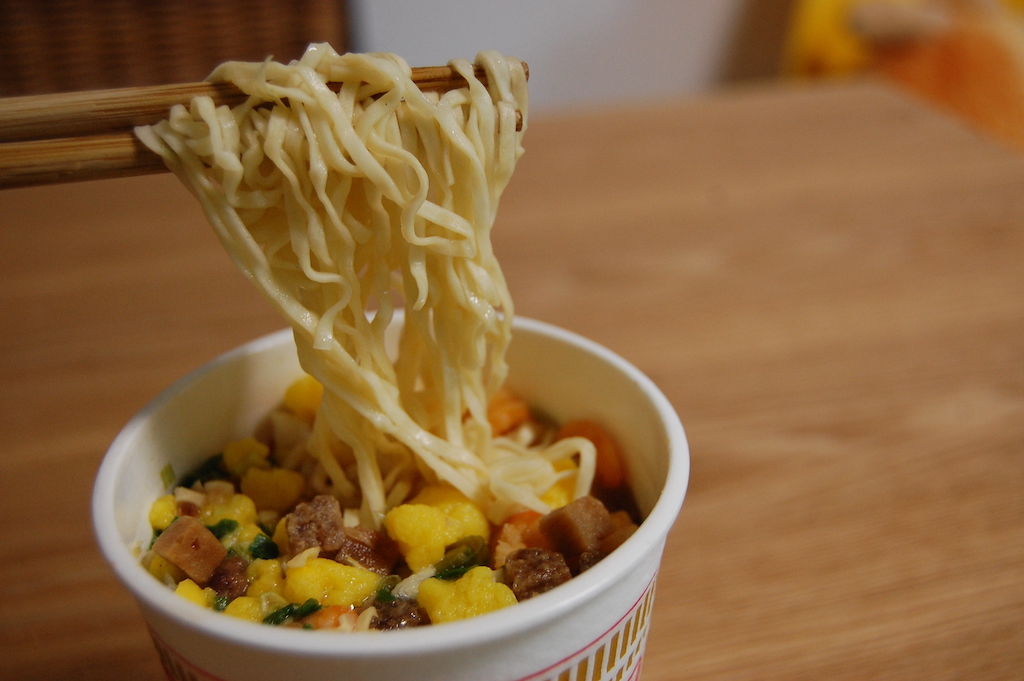
かに (蟹) / KANI
It’s Japanese term for “crab”.
Crab is also one of the most popular seafood in Japan. The fresh one can be eaten raw, and putting the crab in hot pot is also great way to taste it.

かにかま (カニカマ) / KANIKAMA
It’s Japanese term for “crab stick”.
As you may know, it’s a imitation crab meat, and often used for sushi material in many countries. The smell, texture, and taste of the crab stick are really similar to real crab, and amazing!
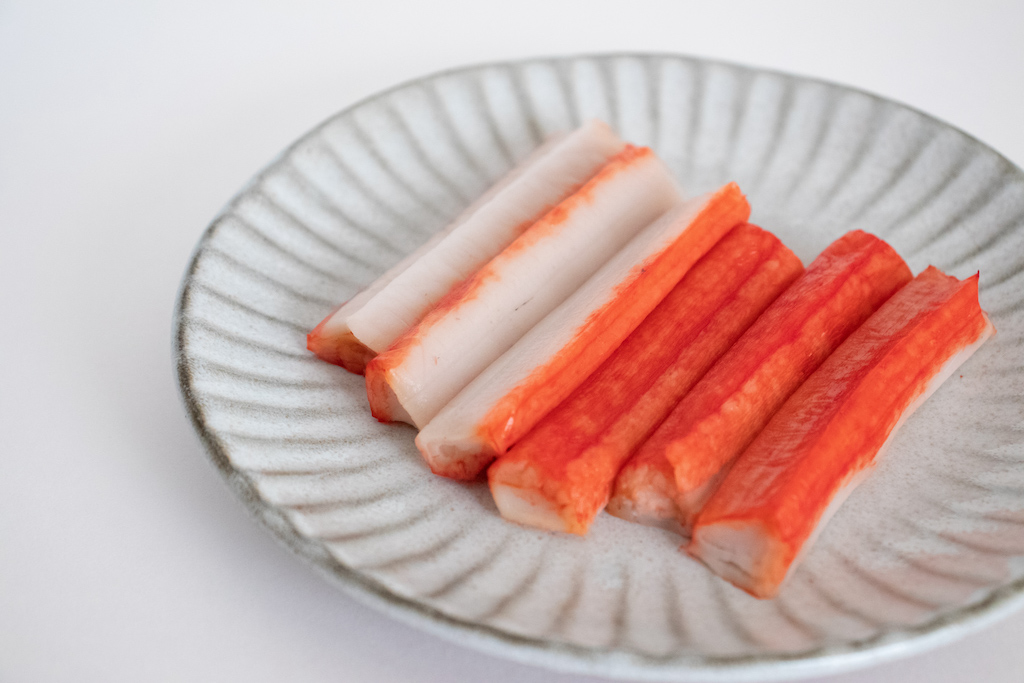
かにくりーむころっけ (カニクリームコロッケ) / KANIKURI-MUKOROKKE
It’s Japanese deep-fried dish using crab, crab cream croquette.
コロッケ (KOROKKE) is deep-fried dish covered with panko. And it can be stuffed with any ingredients. Potato or meatballs are common ingredients, but the white cream sauce mixed with crab is also popular one.
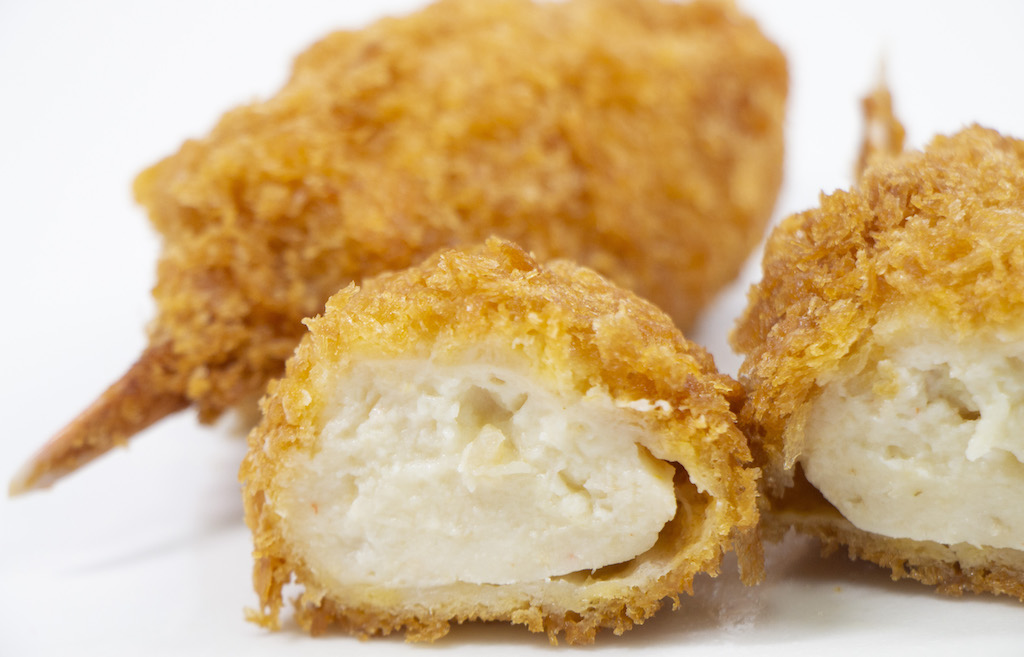
かにたま (かに玉) / KANITAMA
It’s Chinese dish with fried egg and crab.
It’s kind of like Chinese-style omelette. I’ve heard the genuine style of this is using not only crab, but also meat, shrimp, and vegetables. The Japanese version of かに玉 (KANITAMA) is very simple, mainly using crab or imitation crab. You eat this after pouring sweet and sour sauce on top.
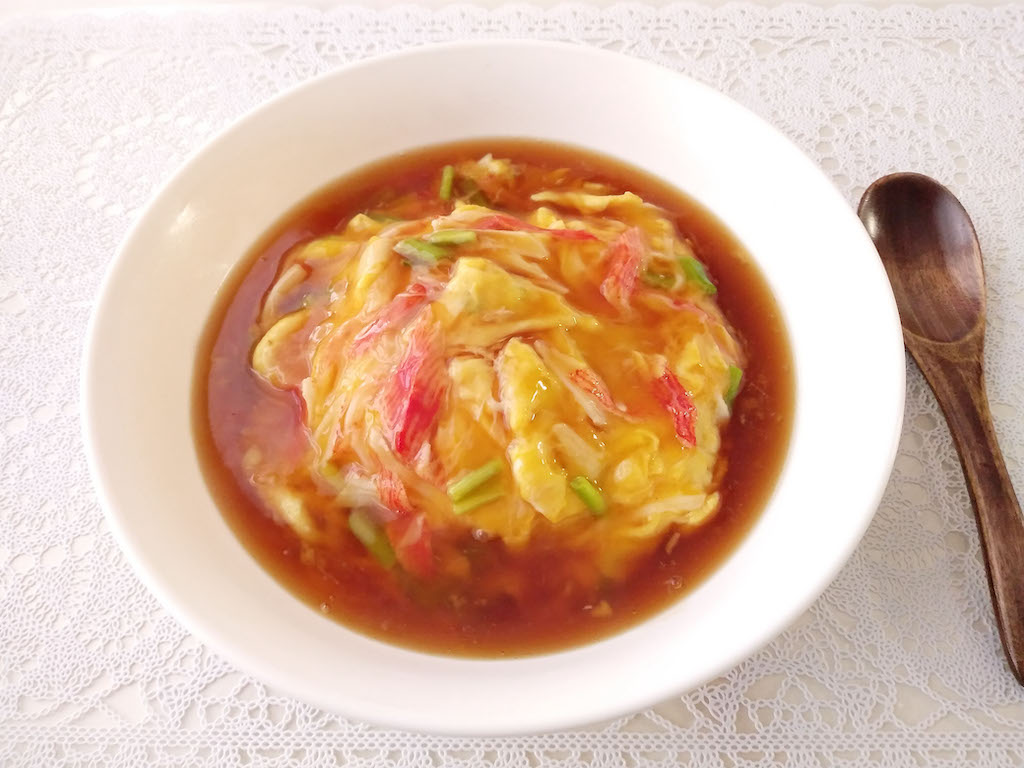
かぶ (蕪) / KABU
It’s Japanese term for “turnip”.
Turnip in Japan is often used for salad, soup, pickles, etc. The texture and taste of it is a little similar to daikon, but it has softer texture, and milder taste than daikon.

かぼちゃ (南瓜) / KABOCHA
It’s Japanese term for “squash”.
Japanese kabocha squash usually has dark green skin, and a little sweet taste. I would say it has stronger taste than the one in America. One of the most popular dish for this is sweet boiled kabocha squash. It also can be used for some Japanese sweets.

かまぼこ (蒲鉾) / KAMABOKO
It’s a type of boiled fish paste.
There are so many types of fish paste in Japan, and it is a representative product of them. The sliced one is often eaten with soy sauce and wasabi, and can be a good appetizer. It’s also used as topping in noodle dishes such as soba and udon. Red and white color of かまぼこ (KAMABOKO) are eaten as a lucky charm (osechi material) in New Year.
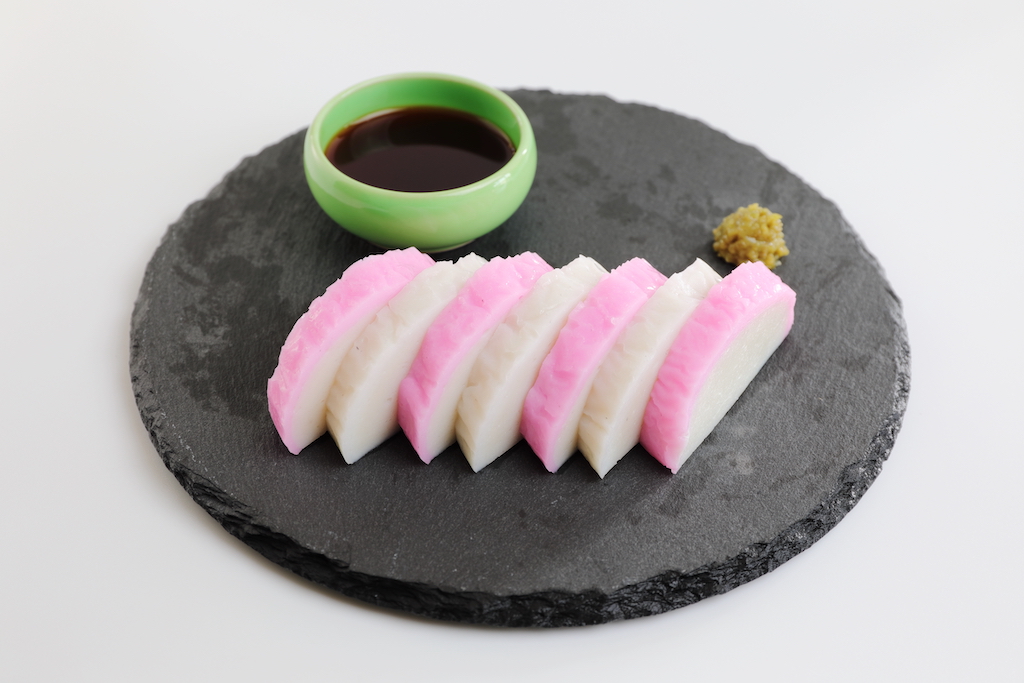
かも (鴨) / KAMO
It’s Japanese term for “duck”.
Duck meat contains high protein and low calories, and has become popular among Japanese. Roasted duck meat is one of the most eaten dish in Japan.
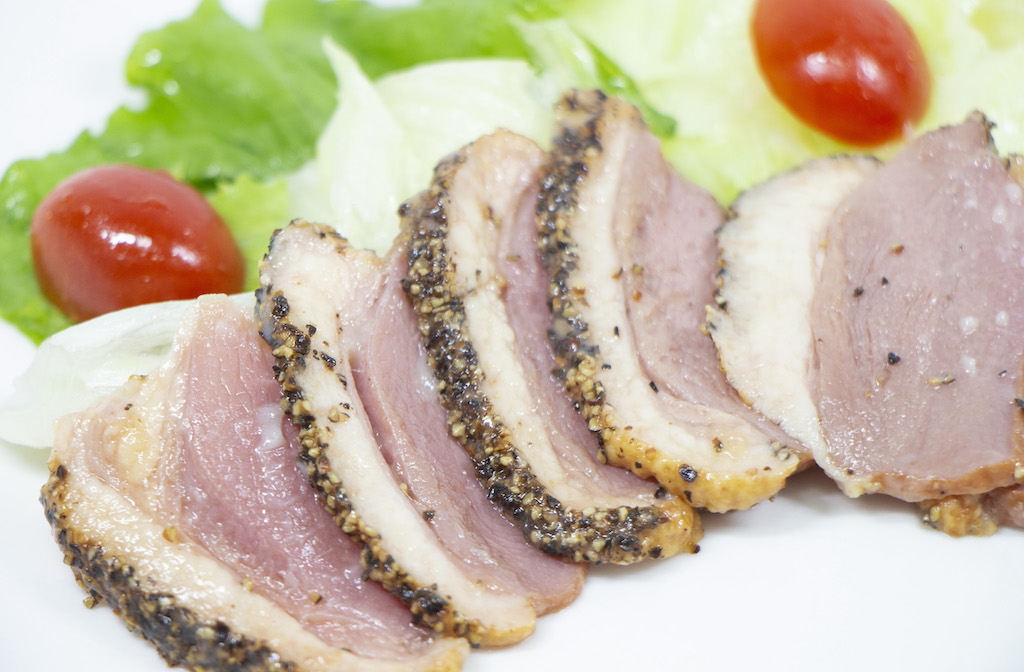
からあげ (唐揚げ) / KARAAGE
It’s Japanese-style fried chicken.
The flavor depends on the each restaurant or home. After marinating chicken meat in the sauce (usually made from soy sauce, sake, and ginger), they are covered with flour or potato starch, and deep-fried well.
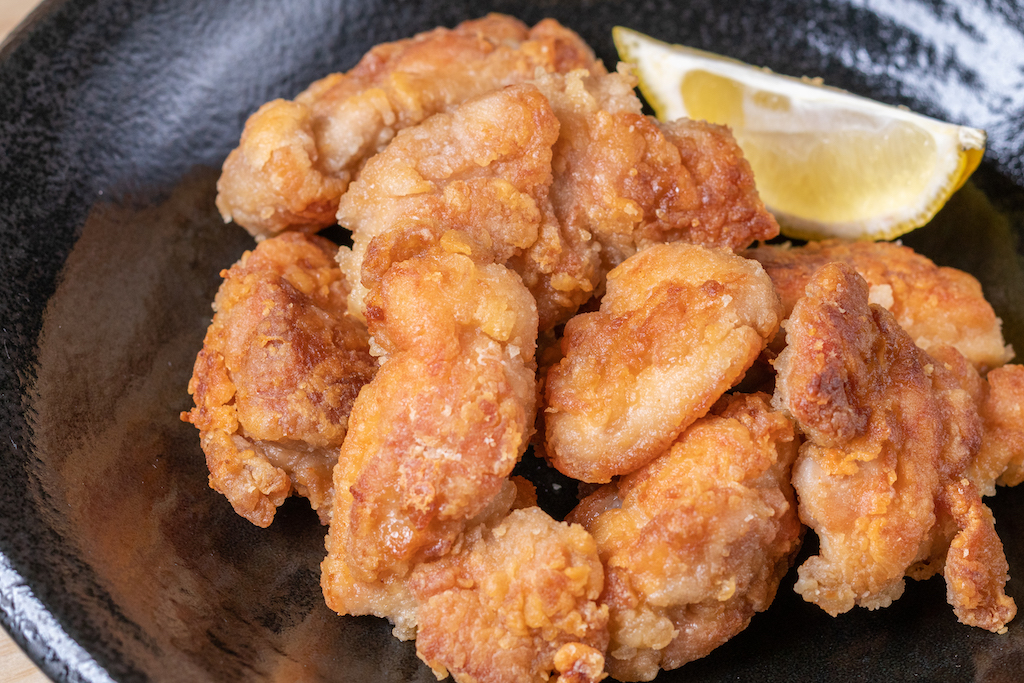
からし (辛子) / KARASHI
It’s Japanese term for “mustard”.
Japanese mustard has much stronger pungent taste than the yellow mustard. To check the interesting differences between them, click below!
What Is Karashi and How Is It Used?
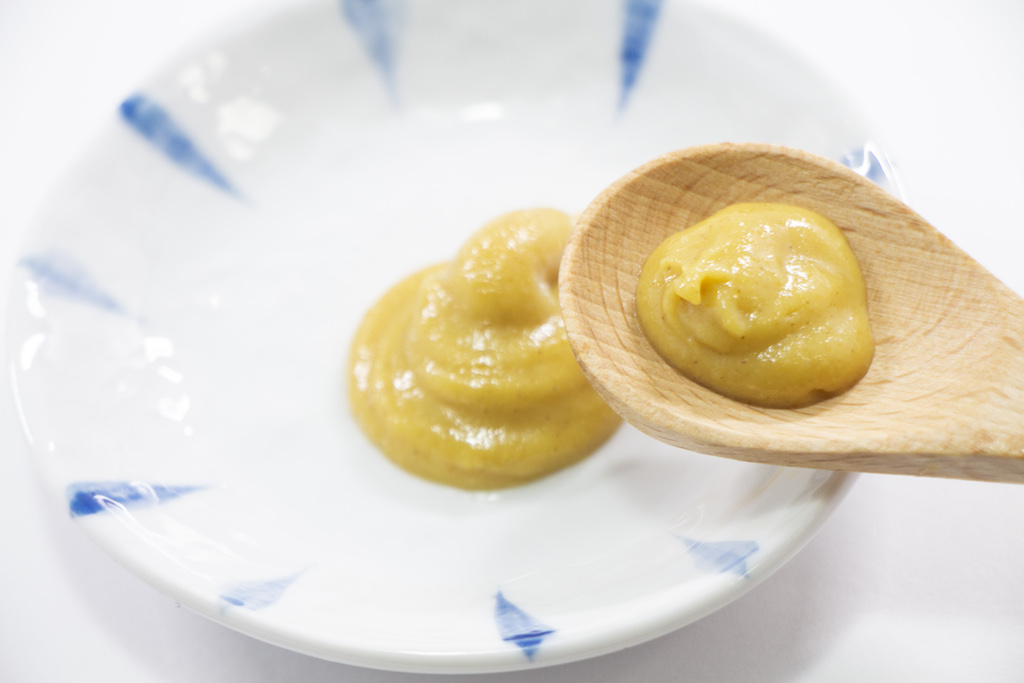
からしめんたいこ (辛子明太子) / KARASHIMENTAIKO
It’s Japanese term for “spicy cod roe”.
Cod roe is marinated in a liquid containing salt, red peppers, and other seasonings.
Although the abbreviated term, 明太子 (MENTAIKO) used to have the meaning of regular cod roe, a lot of people has considered it as spicy cod roe nowadays.
What Is Cod Roe and How Is It Used?
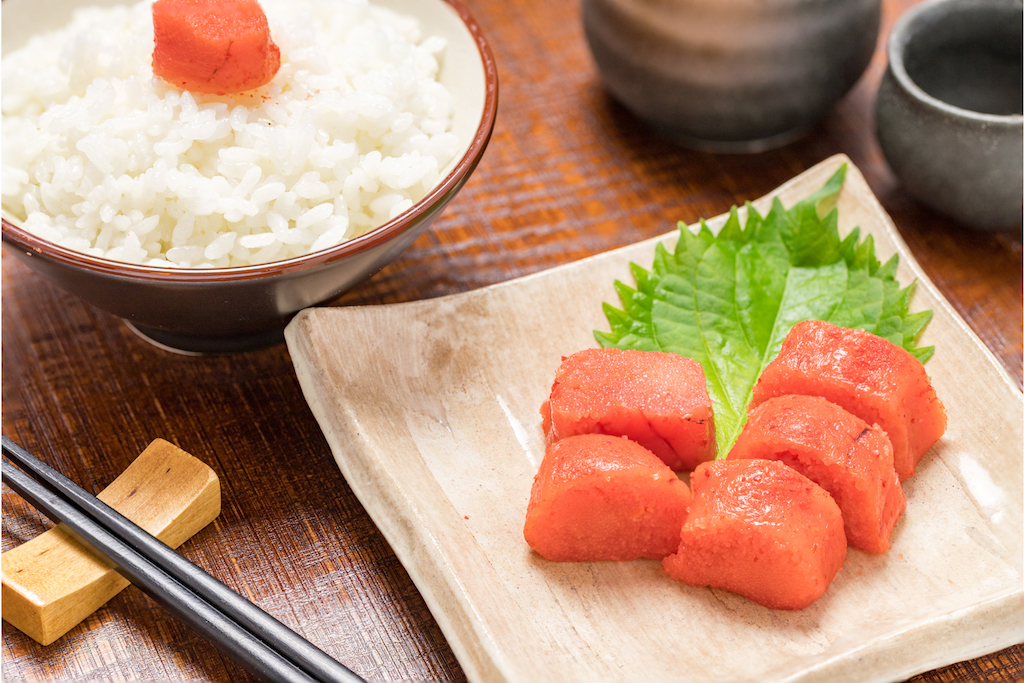
からしれんこん (辛子蓮根) / KARASHIRENKON
It’s Japanese mustard filled lotus root, local food of Kumamoto prefecture.
It’s made by stuffing lotus root with the mixture of karashi, miso, and honey, and deep-frying with skin made of colored flour. The yellow color of the skin is come from turmeric.
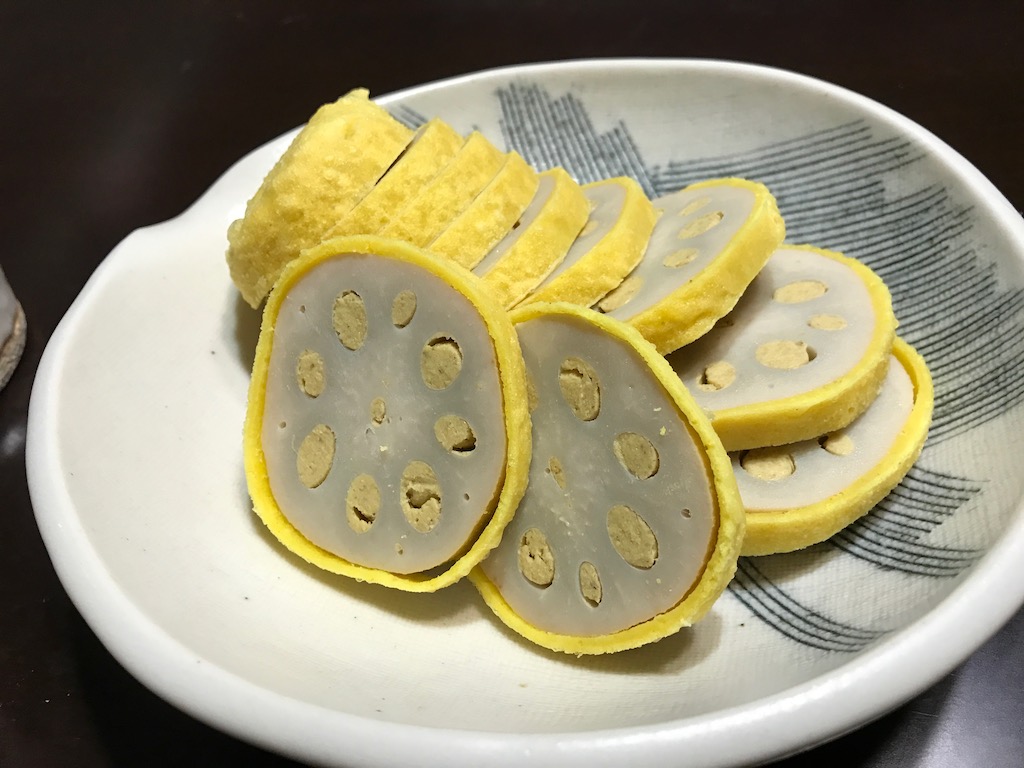
からすみ / KARASUMI
It’s Japanese term for “dried mullet roe”.
Since it’s salted before dried, has very strong salty taste even with small portion. So, it’s usually sliced very thinly and eaten as finger food, or grated to sprinkle on pasta.
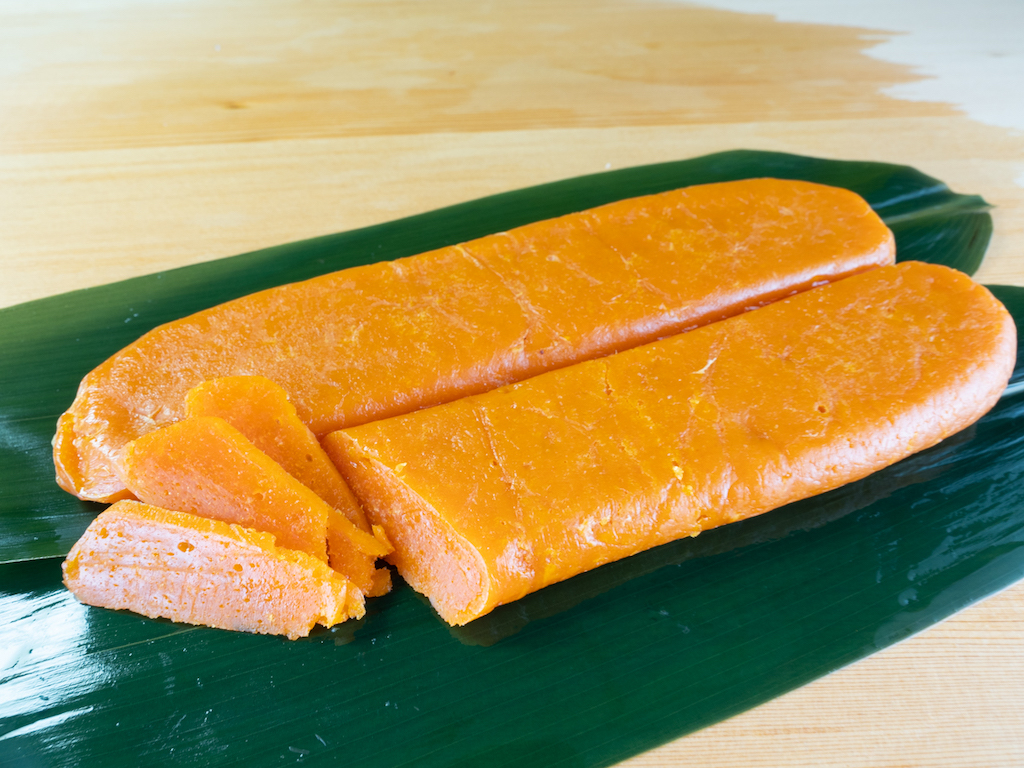
がり (ガリ) / GARI
It’s Japanese term for “sweet pickled ginger”.
It’s sometimes called “sushi ginger” too. As the name says, it’s essential side dish (condiment) when eating sushi. To understand more about がり (GARI), please click below!
Red Pickled Ginger vs Sushi Ginger
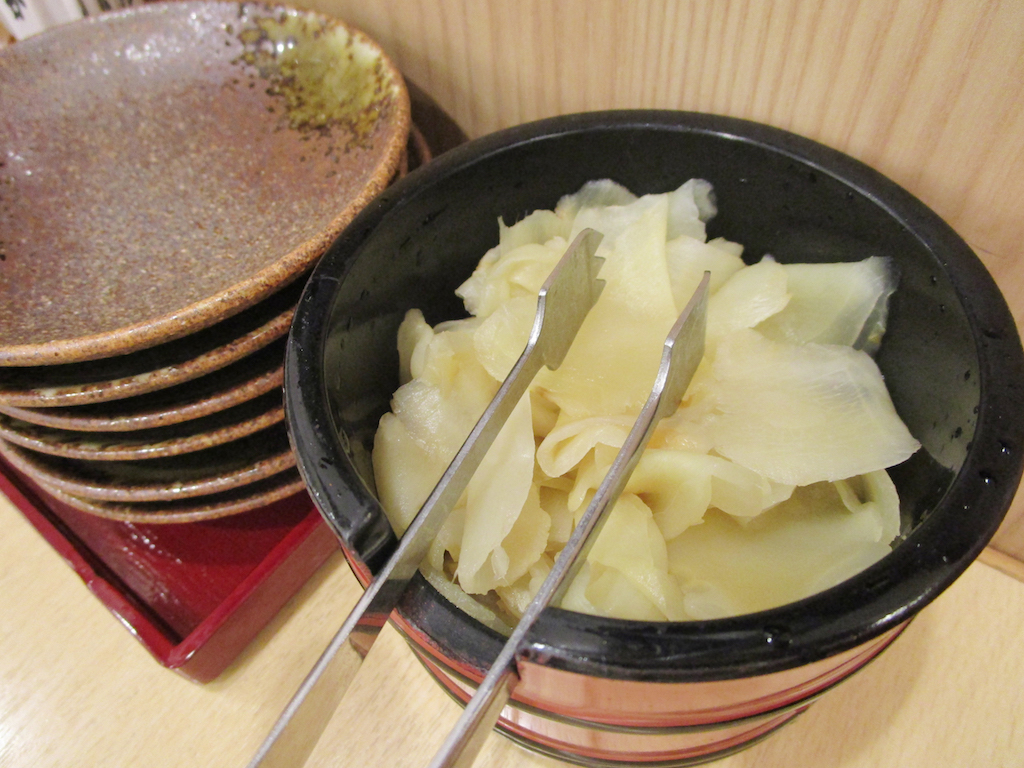
かりんとう / KARINTO
It’s a type of Japanese sweets, fried dough cookies.
The dough made of buckwheat is deep-fried, and coated with brown sugar. The sweetness of brown sugar is marvelous, and really hard, crunchy texture of the cookies are interesting.
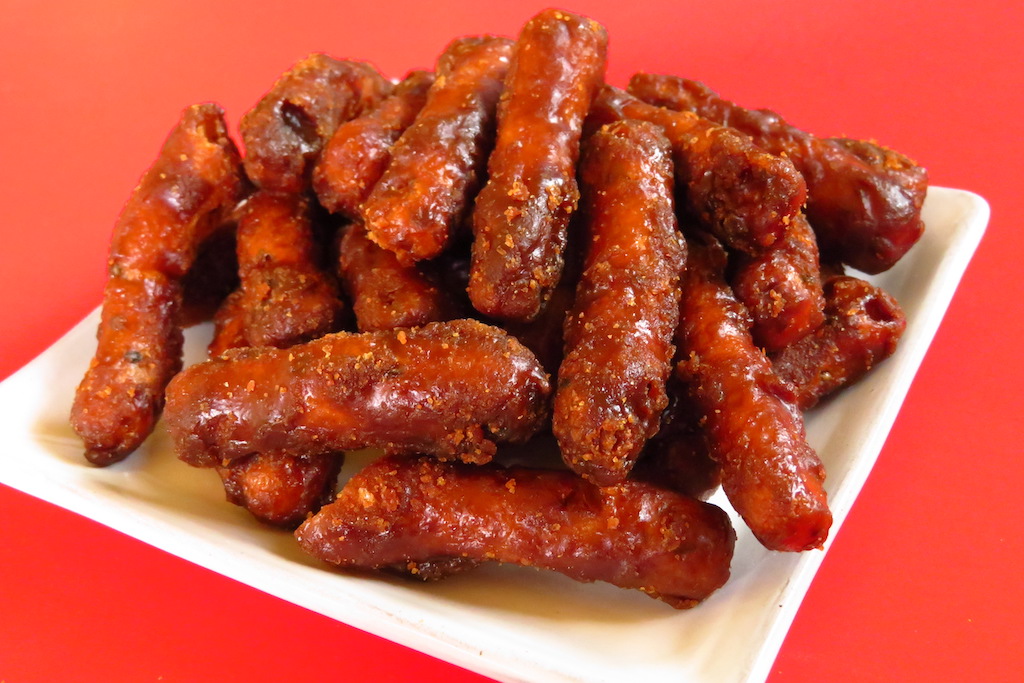
かるぱっちょ (カルパッチョ) / KARUPACCHO
It’s Japanese term for “carpaccio”.
To be precise, it’s supposed to be the generic term for the dish using thinly sliced raw beef with cheese or other sauce on top.
In Japan, when it comes to “carpaccio”, it would rather uses raw seafood (often white fish or octopus) than meat.
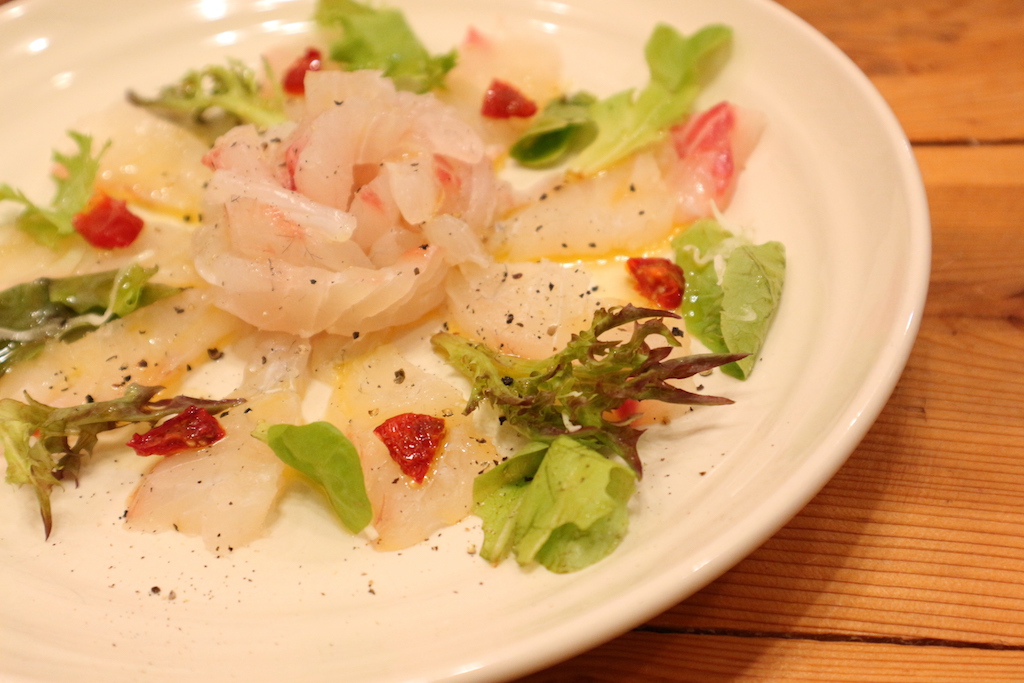
かるび (カルビ) / KARUBI
It’s Japanese term for “rib meat”.
This term is often used at Japanese-style barbecue restaurants (yakiniku). At this type of restaurants, you need to order the meat saying the name of cut of meat.
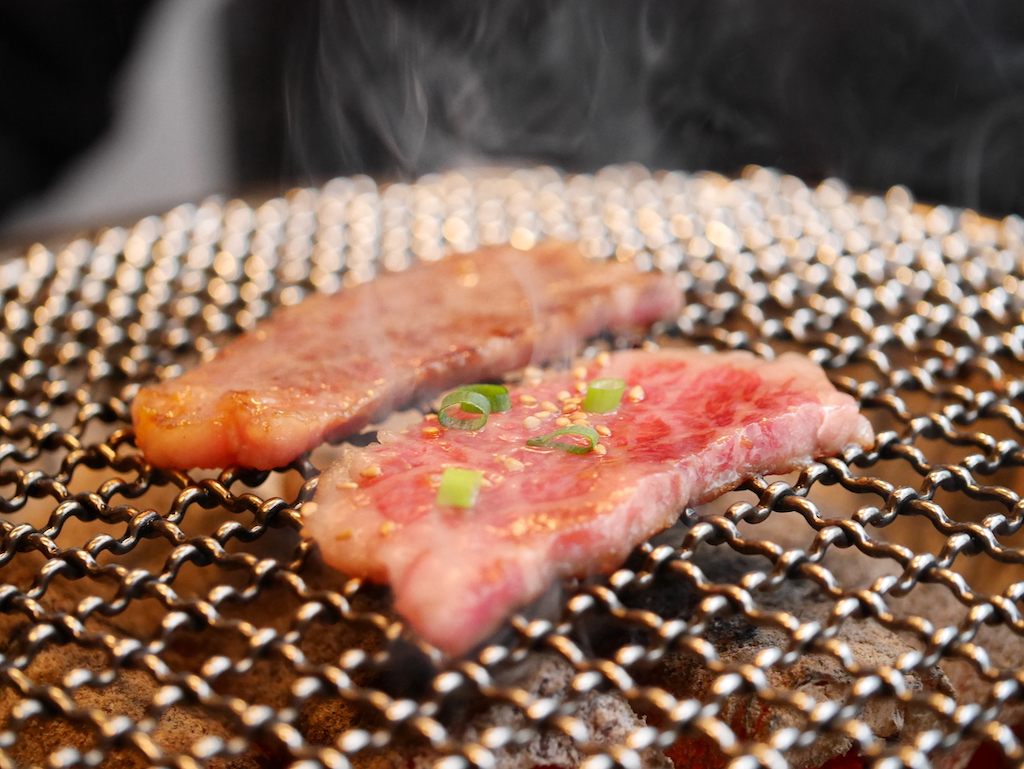
かるぼなーら (カルボナーラ) / KARUBONA-RA
It’s Japanese term for “carbonara”.
Spaghetti carbonara is one of the standard spaghetti menu for Japanese. Basically, the sauce is made from bacon, egg, cheese, heavy cream, salt, and pepper.
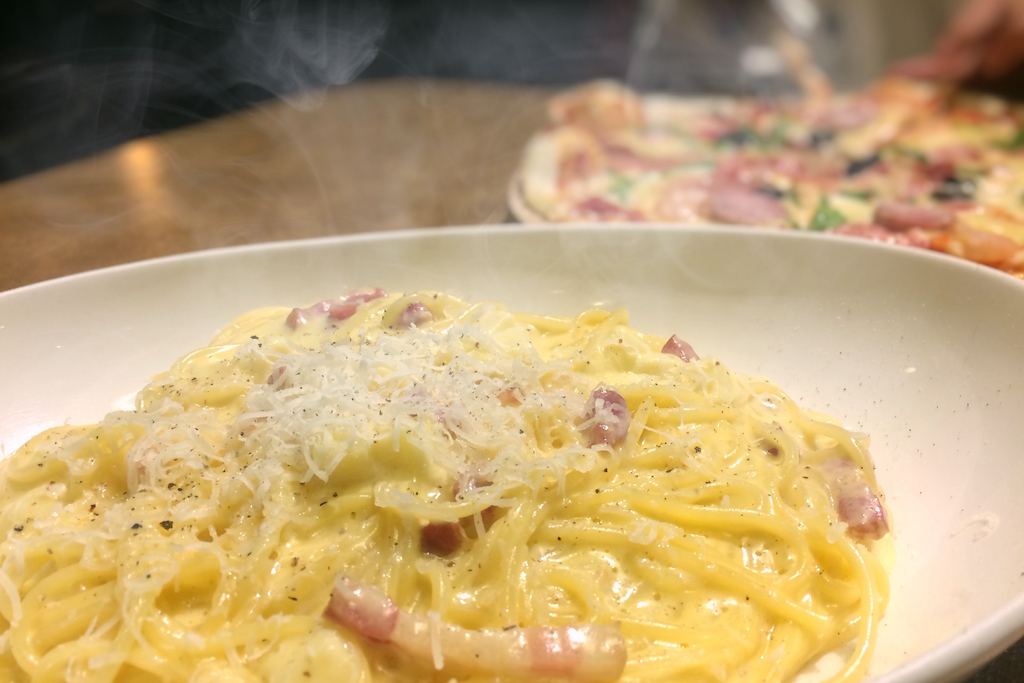
かれー (カレー) / KARE-
It’s Japanese term for “curry”.
Although curry was born in India, Japanese curry culture has developed independently with curry roux. You make soup using bunch of onions, carrots, potatoes, and meat, then add curry roux to complete. Japanese curry is usually eaten with white rice. The set of curry and white rice is called カレーライス (KARE-RAISU).
Besides white rice, it matches so well with various carbohydrates:
・Udon noodles with curry sauce on top is called カレーうどん (KARE-UDON).
・Bread stuffed with curry sauce is called カレーパン (KARE-PAN).
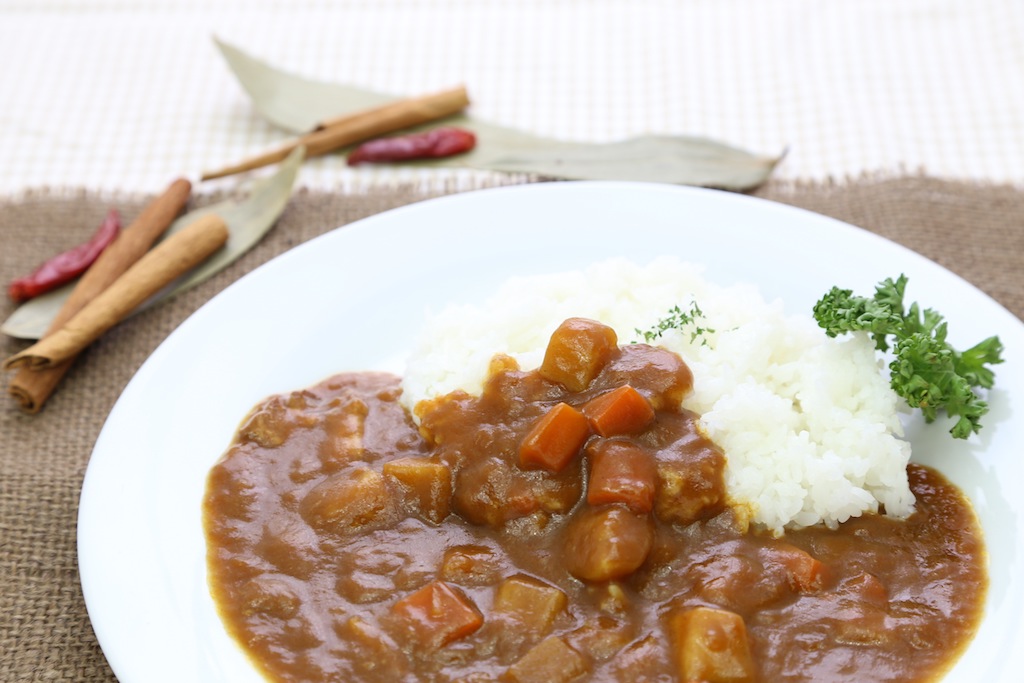
かんてん (寒天) / KANTEN
It’s freeze-dried product made from mucilage of red algae such as agar‐agar or gracilaria. By adding agar‐agar powder into water and sugar, you can make low-calorie jelly so easy. If you use milk instead of water, you can make delicious healthy milk jelly.
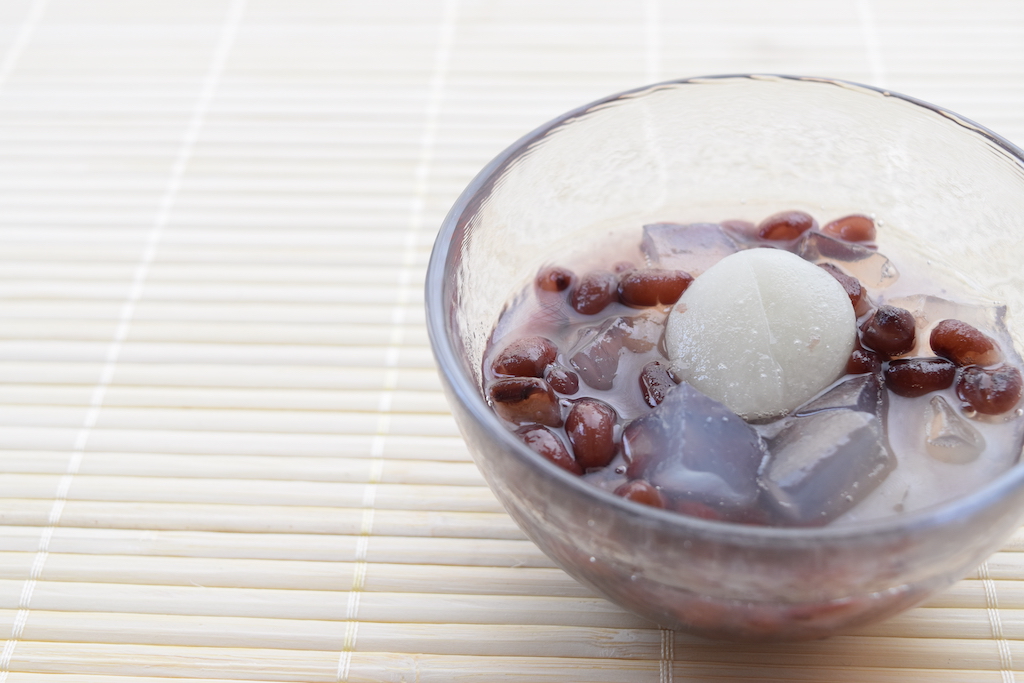
かんぴょうまき (干瓢巻) / KANPYOMAKI
It’s a type of sushi, dried gourd shavings sushi roll.
Dried gourd shavings are seasoned with sweet-salty taste, and have a little chewy texture.
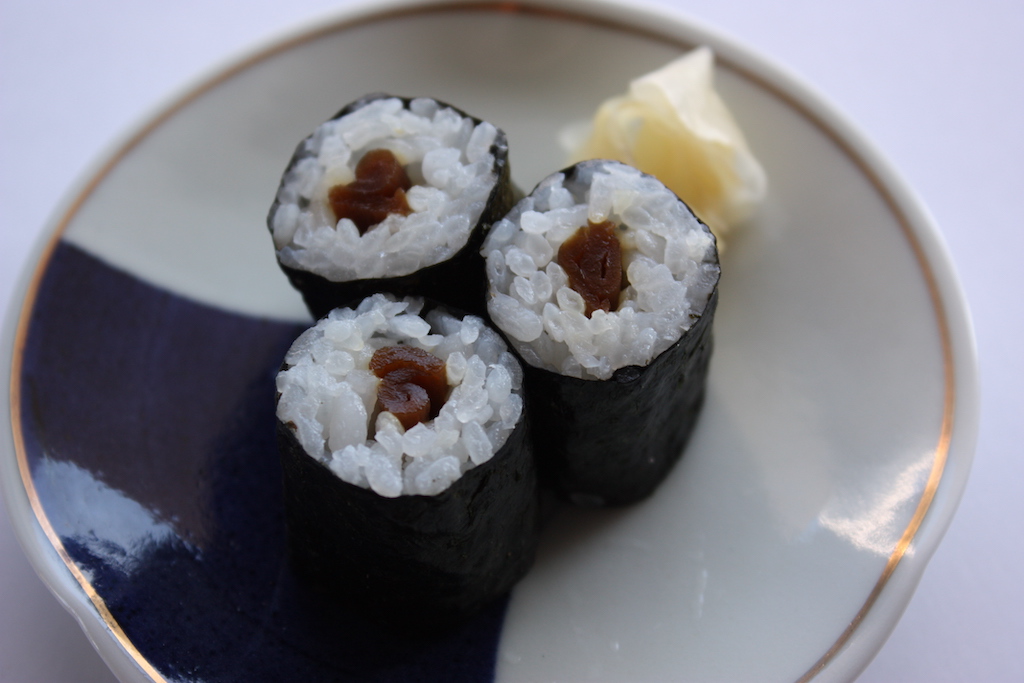
がんもどき / GANMODOKI
It’s a deep-fried tofu with vegetables and other ingredients in it. The mixed vegetables can be anything such as carrot, burdock, lotus root, kelp, shiitake mushroom, etc. By deep-frying the squeezed tofu, it becomes so juicy and delicious. It’s used for oden material, simmered food, and so on.
